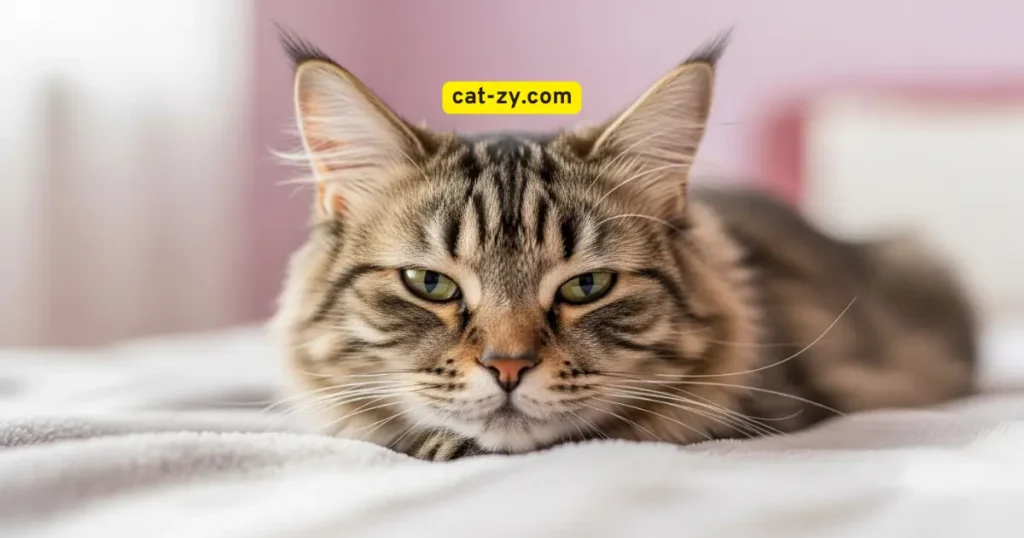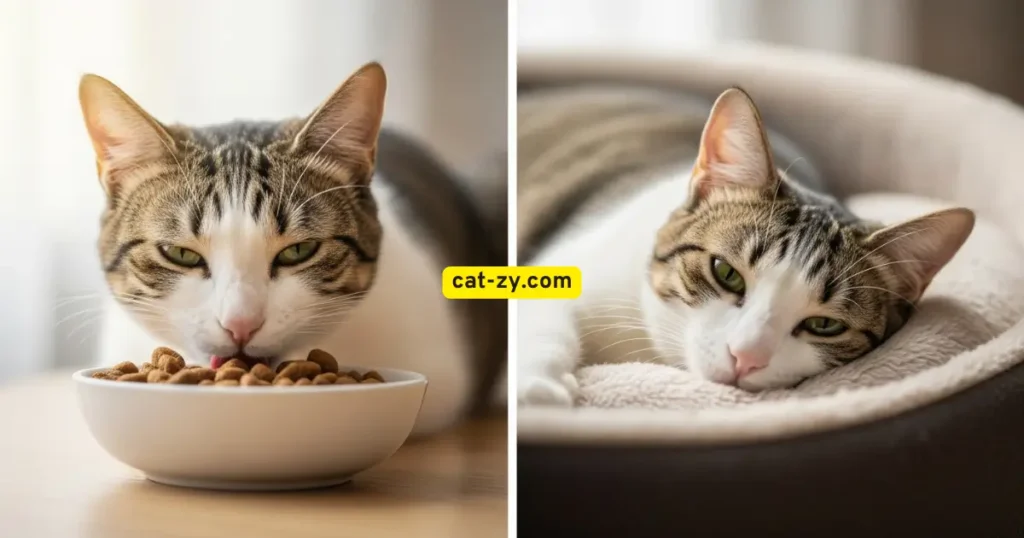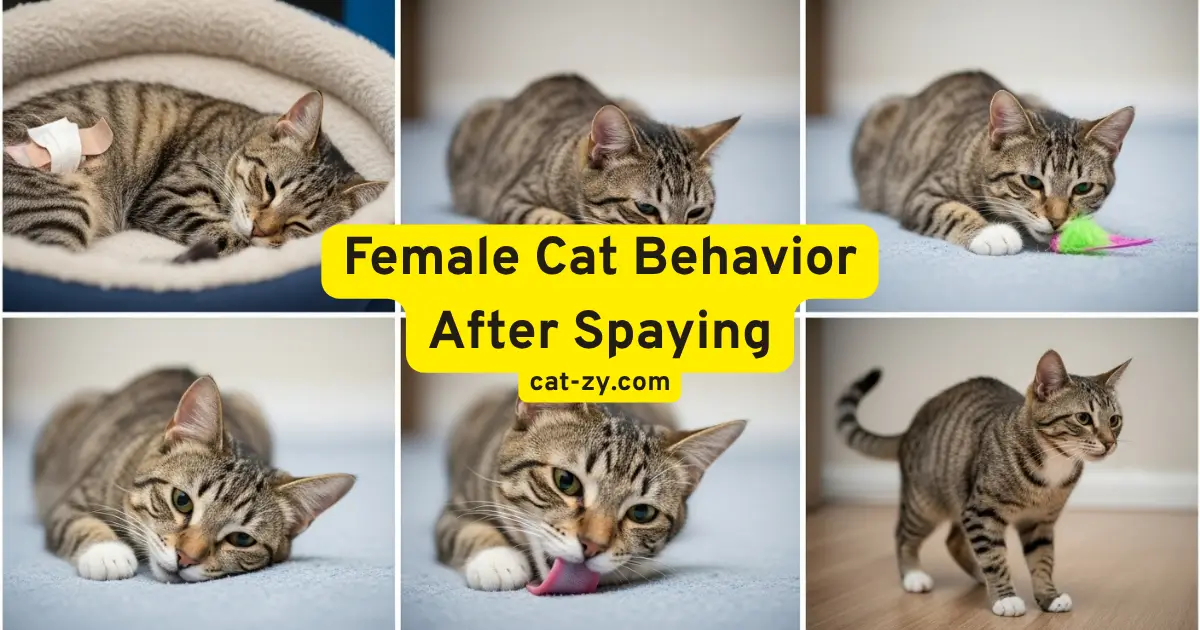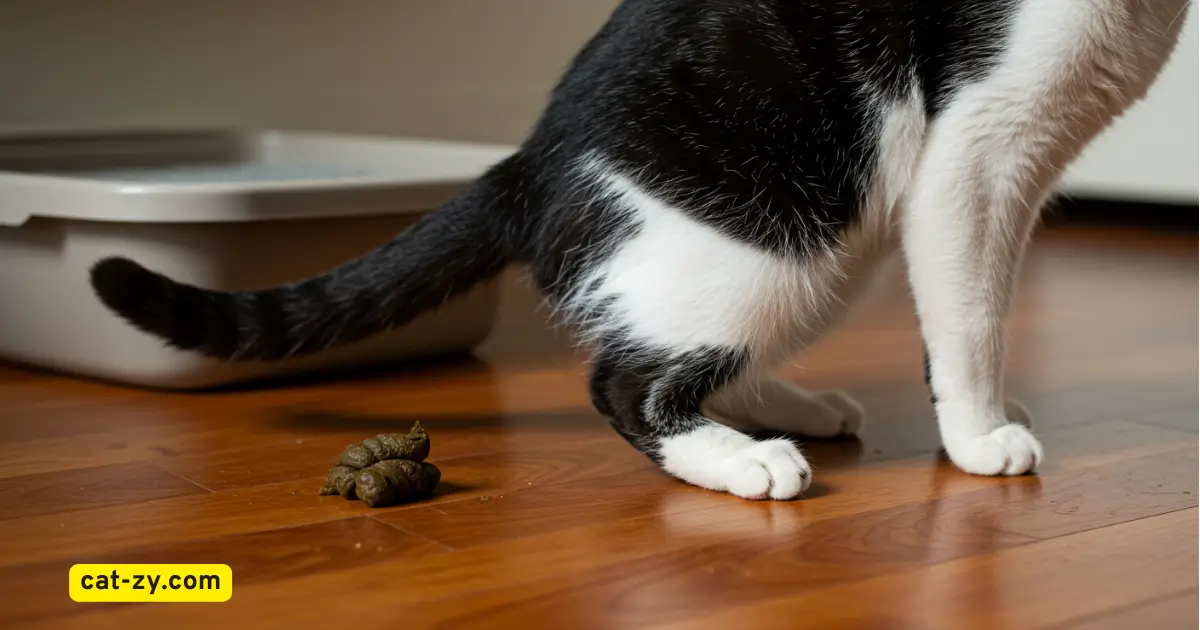Female Cat Behavior After Spaying: 7 Surprising Changes to Expect
As a cat owner, you might have thought about spaying your beloved pet. The goal is to prevent unplanned litters and reduce medical complications. Yet, have you considered what behavioral shifts this procedure might bring to your feline companion?
Spaying can make big changes in female cat behavior after spaying. Some of these changes might surprise you. It’s important to understand these changes to care for your cat as she gets used to her new body.
Learning about the surprising changes in behavior after spaying helps you meet your cat’s needs. It also makes your bond with her stronger.
Table of Contents
What Happens During the Spaying Procedure
Spaying your female cat is a big decision. It’s important to know what it involves and how it affects your pet’s health. Spaying, or ovariohysterectomy, removes your cat’s reproductive organs. Knowing the process can help ease your worries and ensure you’re making the right choice for your cat.
The Surgical Process Explained
The spaying procedure is done under general anesthesia. This keeps your cat pain-free and comfortable. The veterinarian creates a minor abdominal opening to extract the reproductive organs. The surgery is quick, and most cats recover in a few days.
Your veterinarian will give you post-operative care instructions. These help your cat recover smoothly.
Health Benefits of Spaying Your Female Cat
Spaying your cat has many health benefits. It prevents uterine infections and certain cancers, like ovarian and uterine cancer. It also stops unwanted pregnancies and reduces bad behaviors during heat cycles.
The American Veterinary Medical Association says spaying can make your cat’s life longer and healthier.
Best Age to Spay Your Cat
Veterinary professionals continue discussing the optimal timing for this procedure. The AVMA recommends performing the surgery before the initial estrus cycle. This can be as early as four to six months of age.
However, the best age can vary. It depends on your cat’s breed, size, and health. Always talk to your veterinarian to find the best spaying time for your cat.
The Recovery Timeline for Spayed Cats
As your cat recovers from spaying, knowing the recovery timeline is key. It helps you care for your pet well. Be aware of the different stages of recovery.
Immediate Post-Surgery Behavior (First 24-48 Hours)
In the first 24-48 hours, your cat might seem tired, confused, and not want to eat. This is normal. But watch their incision site for redness, swelling, or discharge closely.
Short-Term Recovery (First Week)
In the first week, your cat will start to feel better. But, still limit their activity to avoid problems. Watch their litter box use and overall health. If you see anything odd, talk to your vet.
Complete Recovery (2-4 Weeks)
Most cats fully recover in 2-4 weeks. You can slowly increase their activity during this time. Make sure they’re fully healed before they do strenuous activities.
Monitoring for Complications
Watch your cat closely for signs of complications like infection, too much bleeding, or bad reactions to meds. Contact your veterinarian immediately upon noticing any abnormal signs.
Female Cat Behavior After Spaying: The Complete Picture
Recognizing post-surgical behavioral patterns in spayed females shows numerous expected modifications. This is due to the hormonal balance shift. Knowing these changes helps you care for your pet better during this time.
Hormonal Changes and Their Effects on Behavior
Spaying removes the ovaries and uterus, lowering estrogen and progesterone. These endocrine alterations profoundly influence behavioral patterns in spayed female cats. For example, less estrogen means less sexual behavior. It also changes her energy and how she interacts with her environment.
The hormonal changes post-spaying are not just limited to reproductive behaviors; they can also affect your cat’s overall activity and affection levels. Some cats may become more docile, while others might exhibit changes in their sleep patterns or appetite.
Temporary vs. Permanent Behavioral Changes
Not all behavioral changes after spaying are permanent. Some cats may feel tired or less active right after surgery. But these feelings usually get better as they heal. On the other hand, some changes, like stopping heat cycles, are permanent.
It’s essential to monitor your cat’s behavior closely after spaying to distinguish between temporary adjustments and more lasting changes. This observation will help you tailor your care and interaction to meet their needs.
Individual Variations in Response to Spaying
Just like humans, cats have unique personalities, and their response to spaying can vary significantly. Factors such as age at spaying, individual temperament, and overall health can influence how your cat adjusts to the hormonal changes. Some cats may adapt quickly, while others may take longer to settle into their new behavioral patterns.
Understanding that individual variations exist can help you be more patient and observant, ensuring you provide the necessary support during this period.
Surprising Change #1: Decreased Aggression and Territorial Marking

The procedure creates substantial behavioral modifications in your pet. It typically reduces hostile tendencies and eliminates territorial scent-marking habits. This is because spaying changes their hormones.
Reduction in Spraying and Marking Behaviors
One big change is less spraying and marking. Spraying is a way cats mark their territory by releasing a strong smell. After spaying, cats spray less because their hormones change. This makes your home smell better.
Less Fighting and Aggression Toward Other Cats
Spayed female cats also fight less with other cats. This applies to both cohabiting cats and those encountering each other outdoors. They are less aggressive, which makes for a calmer home and fewer fights.
Improved Tolerance of Household Changes
Spayed cats also handle changes better. Your cat maintains composure during household rearrangements, new animal introductions, or visitor arrivals. This makes it easier for you to make changes at home.
Overall, spaying can make your cat’s life better and yours too. It reduces aggression and territorial marking, improving your relationship with your cat.
Surprising Change #2: Elimination of Heat Cycles and Related Behaviors
Spaying your female cat means no more heat cycles. These cycles make your cat fertile and ready to breed. They can disrupt your cat’s and your life, causing annoying behaviors.
Spaying leads to many behavioral changes. These changes can make life better for you and your cat.
No More Yowling and Calling for Mates
One big change is no more yowling for mates. Female cats in heat often yell loudly to attract males. This can be distressing for owners. After spaying, this loud behavior stops, making your home quieter.
Cessation of Restlessness and Escape Attempts
Females experiencing estrus often attempt to leave home seeking breeding partners. Spaying stops these attempts, keeping your cat safe. Your cat will be less likely to exhibit frantic behavior, making for a calmer pet and owner.
Reduced Attention-Seeking Behaviors
Cats in heat often want more attention from their owners. They can be overly affectionate or demanding. After spaying, these attention-seeking behaviors typically decrease, as the hormonal drive behind them is removed.
Improved Sleep Patterns for Both Cat and Owner
Without heat cycles and related behaviors, sleep improves for both you and your cat. No more yowling, restlessness, and escape attempts mean a more peaceful home. This leads to better rest for everyone.
Overall, spaying your cat leads to a more harmonious home life. It benefits both your cat and you.
Surprising Change #3: Changes in Affection Levels
Female cat behavior after spaying often includes surprising changes in affection levels. Many cat owners see a big difference in how their cat acts after the procedure.
Increased Bonding with Owners
Spaying can make your bond with your cat stronger. Without heat cycles, your cat might pay more attention to you. Such changes may foster deeper emotional connections between you and your pet.
Potential for Temporary Personality Changes
Some cats may show temporary personality changes after spaying. This includes changes in how much they show affection. These changes usually don’t last long and depend on the cat’s age and personality.
How to Respond to Shifts in Affection
If your cat’s affection changes, it’s key to support her feelings. Positive reinforcement, like praise and treats, can help. Being patient and consistent makes your cat feel loved and secure.
By understanding and adapting to these changes, you can build a stronger, more loving bond with your spayed cat.
Surprising Change #4: Altered Energy Levels and Activity Patterns
Female cat behavior after spaying commonly includes altered energy levels and activity patterns. Cats often show different levels of activity and energy after being spayed.

Initial Lethargy During Recovery
Right after spaying, your cat might feel lethargic from the anesthesia and surgery. This feeling usually lasts 24 to 48 hours. Make sure your cat has a quiet, comfy place to rest during this time.
Long-Term Activity Level Changes
After recovering, your cat’s activity levels might change. Some cats move less, while others stay energetic. Watching your cat’s activity and adjusting her space can help her stay healthy and happy.
Encouraging Appropriate Play and Exercise
To keep your spayed cat active, play with her using toys or laser pointers. Regular exercise keeps her body and mind healthy.
Creating an Enriching Environment for Your Spayed Cat
Make your cat’s environment stimulating with fun activities and interactive toys. This helps keep her energy up and keeps her engaged.
Surprising Change #5: Weight Management Challenges
The surgical procedure may create challenges in maintaining your cat’s ideal body weight. This is because their metabolism slows down. If not managed, this can cause weight gain.
Metabolic Changes After Spaying
Spaying can lower your cat’s metabolic rate. This means they need fewer calories to stay the same weight. If you don’t adjust their food, they might gain weight.
Dietary Adjustments to Prevent Obesity
To avoid obesity, you need to make dietary adjustments after spaying. You might need to switch to a lower-calorie food or eat less. Talk to your vet to find the right diet for your spayed cat.
Exercise Recommendations for Spayed Cats
Boosting physical activity helps with weight management. Encourage physical activity through interactive toys and light-based entertainment devices. Food puzzle toys can also increase their activity.
Monitoring Body Condition and Weight
Regular assessment of your pet’s physical condition and body mass is essential. Conduct monthly weigh-ins and modify nutrition and activity accordingly. The ribcage should be palpable beneath minimal fat coverage. If unsure, ask your vet for advice.
By making these changes and watching your cat closely, you can help them stay healthy and at a good weight after spaying.
Surprising Change #6: Improved Health and Reduced Disease Risk
Spaying your cat can greatly improve her health and extend her life. This procedure offers many health benefits. These benefits can greatly enhance your cat’s life quality and length.
Prevention of Reproductive Cancers
Spaying removes the risk of uterine infections and certain cancers. These include ovarian and uterine cancer. By removing the reproductive organs, these cancers cannot develop.
Reduction in Mammary Tumors
Early surgical intervention, particularly before initial estrus, decreases breast cancer susceptibility. This is a key step in keeping your cat healthy.
Overall Increased Lifespan
Preventing cancers and tumors leads to a longer life for your cat. This surgical decision promotes enhanced wellness and extended longevity.
Long-Term Health Monitoring for Spayed Cats
Despite the procedure’s medical advantages, consistent veterinary checkups remain essential. Regular check-ups help catch any health issues early. This keeps your cat healthy and happy.
Surprising Change #7: Potential Behavioral Issues to Watch For
Spaying can solve many behavioral problems, but it also brings new challenges. Understanding these behavioral shifts enables optimal feline care provision.

Temporary Depression or Anxiety
Some cats may experience temporary depression or anxiety after spaying. Your pet may exhibit reduced appetite, increased fatigue, or heightened withdrawal behaviors. Making their space comfortable and keeping routines the same can help.
Having a quiet spot for your cat to rest and sticking to a routine can lessen stress. Sometimes, veterinary guidance is needed to handle these changes.
Litter Box Problems and Solutions
Spaying can lead to litter box issues due to stress or routine changes. Keeping the litter box clean and easy to get to is key. If problems don’t go away, seeing a vet to check for health issues is a good idea.
Solutions might include trying different litters, having more litter boxes, or moving the litter box to a quieter spot.
Aggression or Fearfulness
Some cats may become more aggressive or fearful after spaying. This could be because of pain, discomfort, or hormonal changes. It’s important to be gentle with your cat and keep their environment safe.
If your cat’s aggression or fearfulness doesn’t get better, talking to a vet is crucial. They might suggest behavior changes or medication.
When to Consult Your Veterinarian
Consult your veterinarian when observing significant or persistent behavioral alterations. They can help manage these issues and check for health problems.
Regular vet visits and talking openly with your vet are key to meeting your cat’s needs after spaying.
Supporting Your Cat Through Post-Spay Transitions
Supporting female cat behavior after spaying requires creating a caring recovery environment. Ensuring your pet’s comfort and security is fundamental to successful healing.
Creating a Comfortable Recovery Environment
Create a peaceful, heated environment without air currents for your pet. Maintain indoor confinement to prevent animal contact and disease transmission. A soft blanket or heated cat bed can make a cozy spot.
Ensure convenient access to meals, hydration, and elimination areas. This helps them without too much effort.
Positive Reinforcement Techniques
Positive reinforcement helps a lot during recovery. Provide positive reinforcement through snacks and verbal encouragement when your pet displays peaceful conduct. This can lower stress and anxiety.
Gentle petting or just sitting with your cat can comfort them. Remember, they might be tired or grumpy during this time.
Patience and Consistency in Care
Being consistent is important during recovery. Follow a regular feeding schedule and watch the litter box. Watch for signs of complications like bleeding, swelling, or discharge.
If you see anything odd, call your vet right away.
Products That May Help During Recovery
There are products that can help your cat recover. A recovery suit or onesie stops them from licking or biting the surgery site. Pheromone spray or diffusers can also calm them down.
A cushioned, ergonomic sleeping area enhances your pet’s recuperation quality.
Conclusion
Spaying your female cat can cause some surprising changes in behavior. Knowing these changes helps you care for your cat better. This way, you can support them during the post-spay period.
Behavioral changes can include less aggression and territorial marking. Heat cycles and related behaviors also stop. You might see changes in how affectionate, energetic, or how they manage their weight. Some changes are short-term, while others last longer.
To make the transition easier, create a cozy recovery space. Use positive reinforcement to help your cat adjust. Be patient and consistent in your care. Using the right products can also aid in recovery.
Understanding female cat behavior after spaying is key to providing proper support. It helps you support their physical and emotional health. These measures result in improved quality of life for both the owner and the companion.
FAQ
What are the most significant changes in female cat behavior after spaying?
After spaying, you’ll notice a drop in aggression. Heat cycles will stop. You might see changes in how affectionate they are and their energy levels. Managing their weight can also be a challenge.
What is the typical recovery timeline for female cats following the spaying procedure?
The recovery time for spayed cats is usually 2-4 weeks. Right after surgery, you’ll see changes in their behavior within the first 24-48 hours.
Will spaying my cat reduce spraying and marking behaviors?
Yes, spaying can greatly reduce spraying and marking in female cats. These behaviors are often caused by hormones.
Can spaying cause temporary depression or anxiety in cats?
Yes, some cats might feel depressed or anxious after spaying. This is due to the sudden hormonal change. But it’s usually short-lived.
How can I support my cat through post-spay transitions?
To support your cat, make their recovery area comfy. Use positive reinforcement. Be patient and consistent. Also, use products that help with recovery.
Will spaying my cat lead to weight gain?
Spaying can cause metabolic changes that might lead to weight gain. Proper nutrition and physical activity can avoid this complication.
Are there any long-term health benefits to spaying my female cat?
Yes, spaying has long-term health benefits. It prevents reproductive cancers and reduces mammary tumors. It also increases their lifespan.
What methods should I use to track my pet’s physical condition and body mass post-surgery?
For effective condition assessment, consistently evaluate your pet’s mass and physical form. Adjust their diet and exercise as needed to keep them healthy.








4 Comments
Comments are closed.